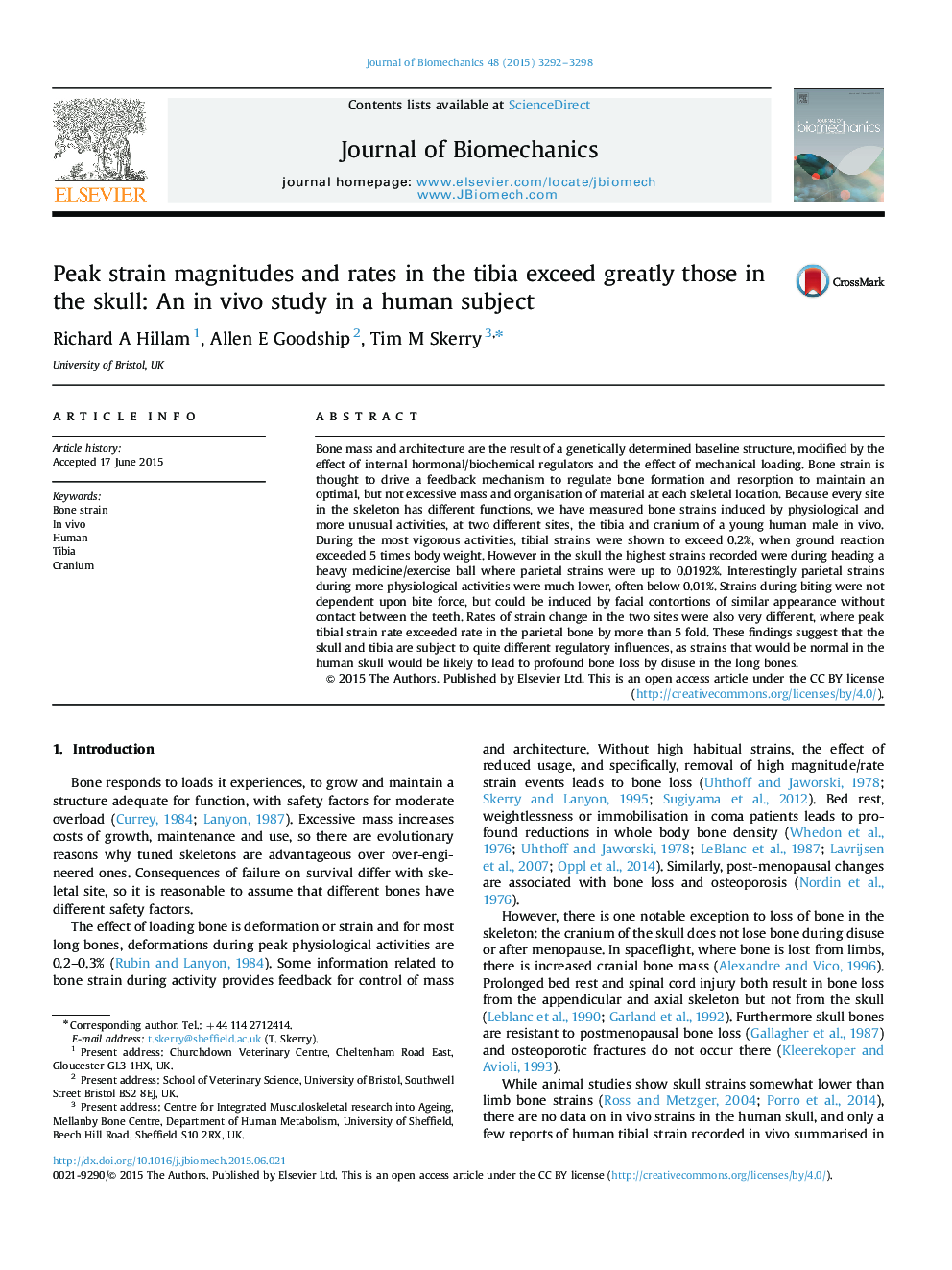| Article ID | Journal | Published Year | Pages | File Type |
|---|---|---|---|---|
| 10431308 | Journal of Biomechanics | 2015 | 7 Pages |
Abstract
Bone mass and architecture are the result of a genetically determined baseline structure, modified by the effect of internal hormonal/biochemical regulators and the effect of mechanical loading. Bone strain is thought to drive a feedback mechanism to regulate bone formation and resorption to maintain an optimal, but not excessive mass and organisation of material at each skeletal location. Because every site in the skeleton has different functions, we have measured bone strains induced by physiological and more unusual activities, at two different sites, the tibia and cranium of a young human male in vivo. During the most vigorous activities, tibial strains were shown to exceed 0.2%, when ground reaction exceeded 5 times body weight. However in the skull the highest strains recorded were during heading a heavy medicine/exercise ball where parietal strains were up to 0.0192%. Interestingly parietal strains during more physiological activities were much lower, often below 0.01%. Strains during biting were not dependent upon bite force, but could be induced by facial contortions of similar appearance without contact between the teeth. Rates of strain change in the two sites were also very different, where peak tibial strain rate exceeded rate in the parietal bone by more than 5 fold. These findings suggest that the skull and tibia are subject to quite different regulatory influences, as strains that would be normal in the human skull would be likely to lead to profound bone loss by disuse in the long bones.
Keywords
Related Topics
Physical Sciences and Engineering
Engineering
Biomedical Engineering
Authors
Richard A Hillam, Allen E Goodship, Tim M Skerry,
